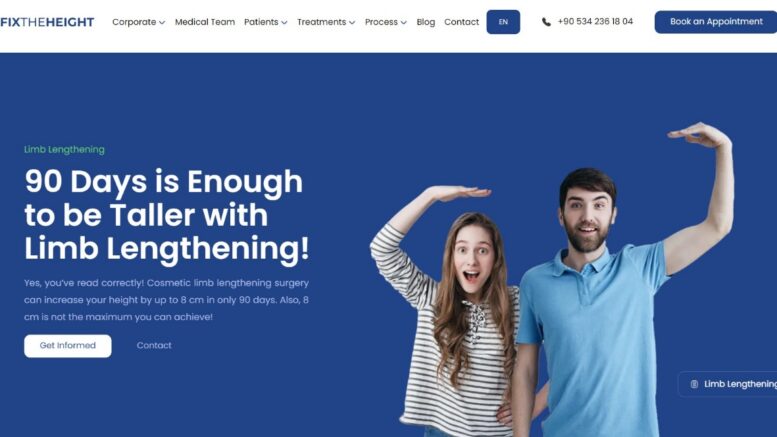Limb lengthening Surgery is typically considered for individuals who have a genuine need for increasing their limb length and have certain characteristics that make them good candidates for the procedure. While each case is unique, here are some general criteria that may indicate suitability for limb lengthening:
Leg Length Discrepancy:
Individuals with a significant leg length discrepancy, where one leg is noticeably shorter than the other, may be good candidates for limb lengthening. The procedure can help address the imbalance and improve overall body symmetry.
Height Discrepancy:
Individuals with a height discrepancy due to short stature may consider limb lengthening to increase their overall height. It’s important to have realistic expectations and understand the potential risks and benefits associated with the procedure.
Skeletal Maturity:
Limb lengthening is typically recommended for individuals who have reached skeletal maturity, which is usually around 15-16 years of age for girls and 17-18 years of age for boys. This ensures that the growth plates have closed, reducing the risk of complications related to interfering with natural bone growth.
Good General Health:
Candidates for limb lengthening should be in good overall health to tolerate the surgical procedure, undergo the rehabilitation process, and have the ability to manage potential complications that may arise. A thorough medical evaluation will assess the candidate’s health status and suitability for the procedure.
Motivation and Commitment:
Limb lengthening is a lengthy and demanding process that requires significant commitment from the patient and their support system. Candidates should be motivated, mentally prepared, and willing to adhere to post-operative care instructions, physical therapy, and follow-up visits.
It’s important to consult with an experienced orthopedic surgeon who specializes in limb lengthening to determine individual candidacy. The surgeon will assess various factors, including medical history, physical examination, imaging studies, and personal goals, to determine if limb lengthening is a suitable option.
Remember that each case is unique, and the decision to undergo limb lengthening should be made after thorough consideration, discussion with the medical team, and a clear understanding of the potential risks and benefits involved.
How active can be after limb lengthening surgery?
You can generally maintain a certain level of activity after limb lengthening, but the specific activities you can engage in may depend on factors such as the type of lengthening procedure, the stage of the lengthening process, the individual’s healing progress, and the recommendations of the medical team. Here are some general considerations:
Physical Therapy:
Physical therapy plays a crucial role in the rehabilitation process after limb lengthening. It helps strengthen muscles, improve range of motion, and enhance functional abilities. You will typically engage in physical therapy sessions tailored to you specific needs and capabilities.
Weight-Bearing and Mobility:
The ability to bear weight and move the limb may vary throughout different stages of the lengthening process. Initially, weight-bearing may be limited or assisted with devices such as crutches or walkers. As healing progresses, you may gradually increase weight-bearing and regain mobility under the guidance of the medical team.
Low-Impact Activities:
Low-impact activities, such as swimming, stationary biking, or gentle walking, may be suitable during the lengthening process. These activities help maintain cardiovascular fitness and overall well-being without exerting excessive stress on the lengthened limb.
Restrictions on High-Impact or Contact Sports:
Engaging in high-impact activities or contact sports that involve running, jumping, or potential collisions may be restricted during the lengthening process to protect the healing bone and minimize the risk of injury or complications. The medical team will provide guidance on specific activities to avoid or modify.
Gradual Return to Regular Activities:
As the bone consolidates and the lengthening process nears completion, you can gradually return to your regular activities, including sports and recreational pursuits. The timing and progression of returning to specific activities will be determined by the medical team based on individual healing progress.
It’s crucial to follow the recommendations and guidelines provided by the medical team regarding activity restrictions, weight-bearing, and physical therapy. The focus should be on maintaining a balanced approach that promotes healing while allowing you to remain physically active within the limitations set by your individual circumstances.
Regular communication with the medical team, adherence to post-operative care instructions, and close monitoring of any changes or concerns are essential to ensure a safe and successful recovery for children undergoing limb lengthening.
Having limb lengthening surgery is not an easy decision to make. Doctor quality, hospital quality and coordination team must be chosen carefully. In terms of success rates for limb lengthening surgery Turkey, our country is the shining star in the world.
